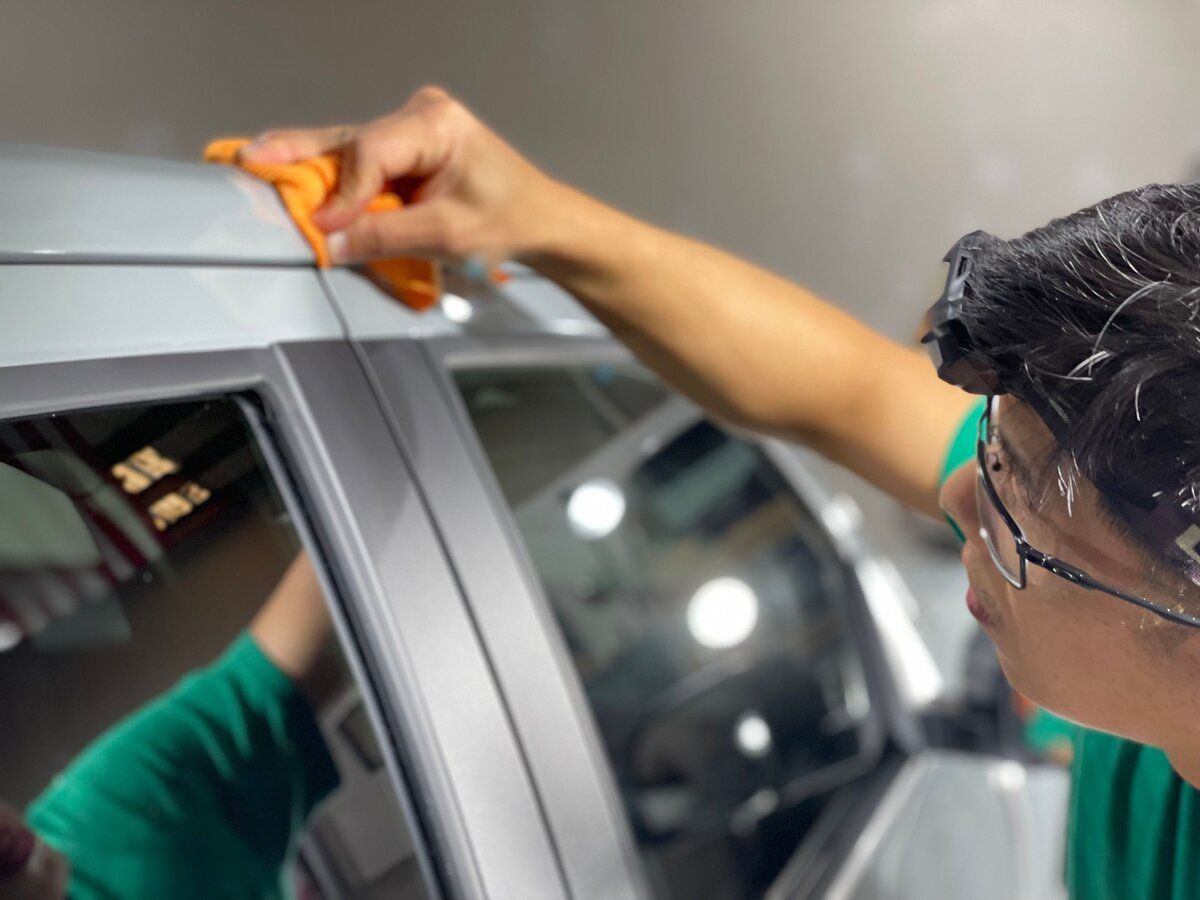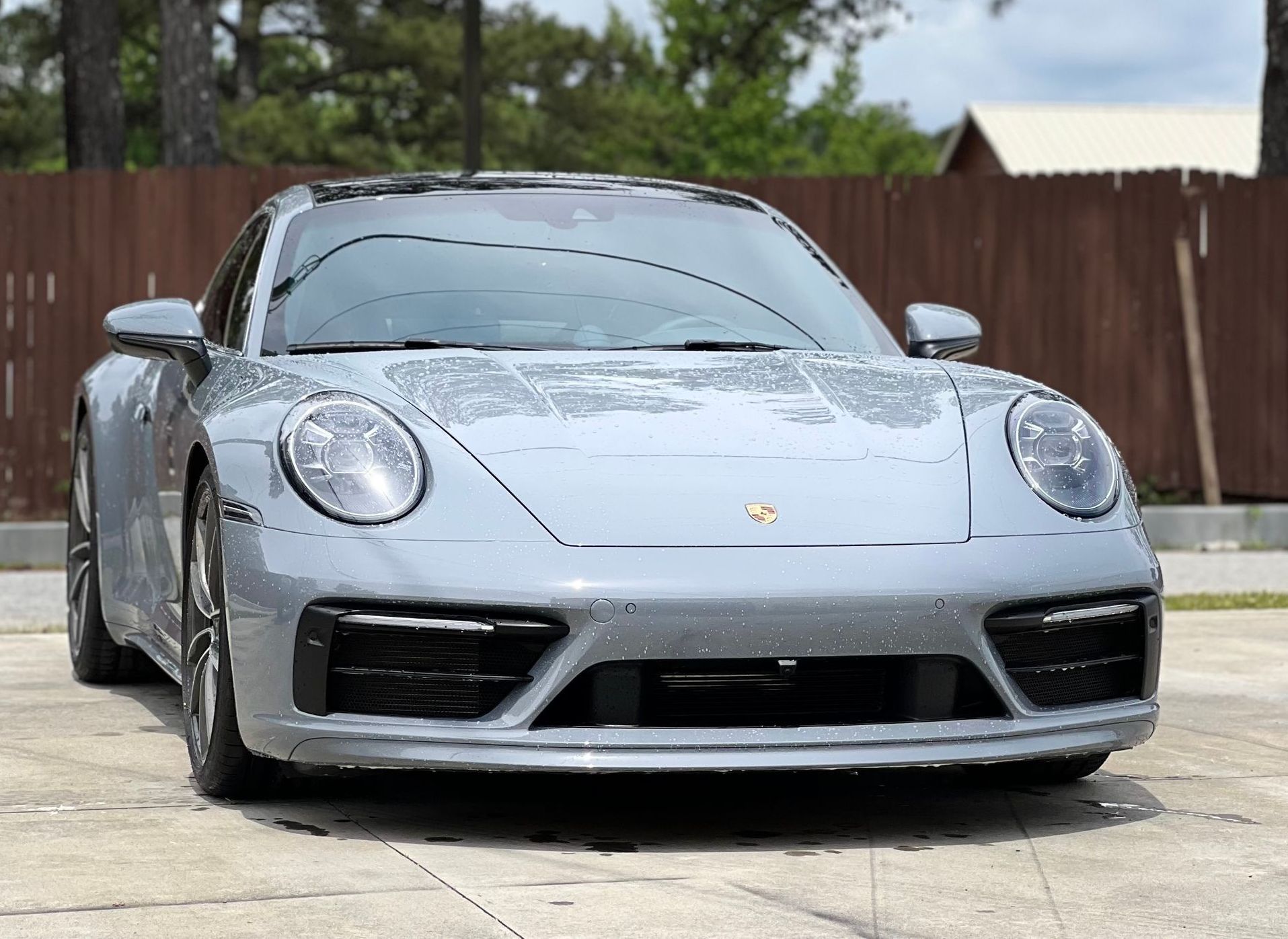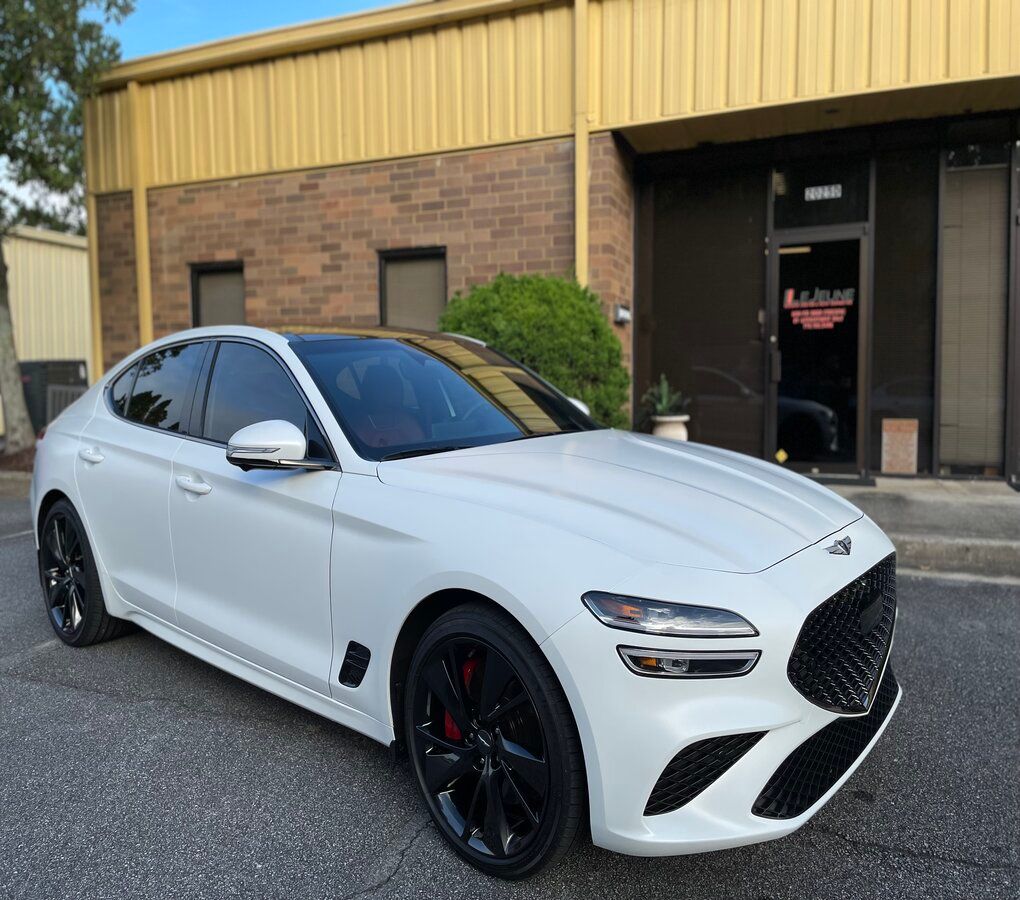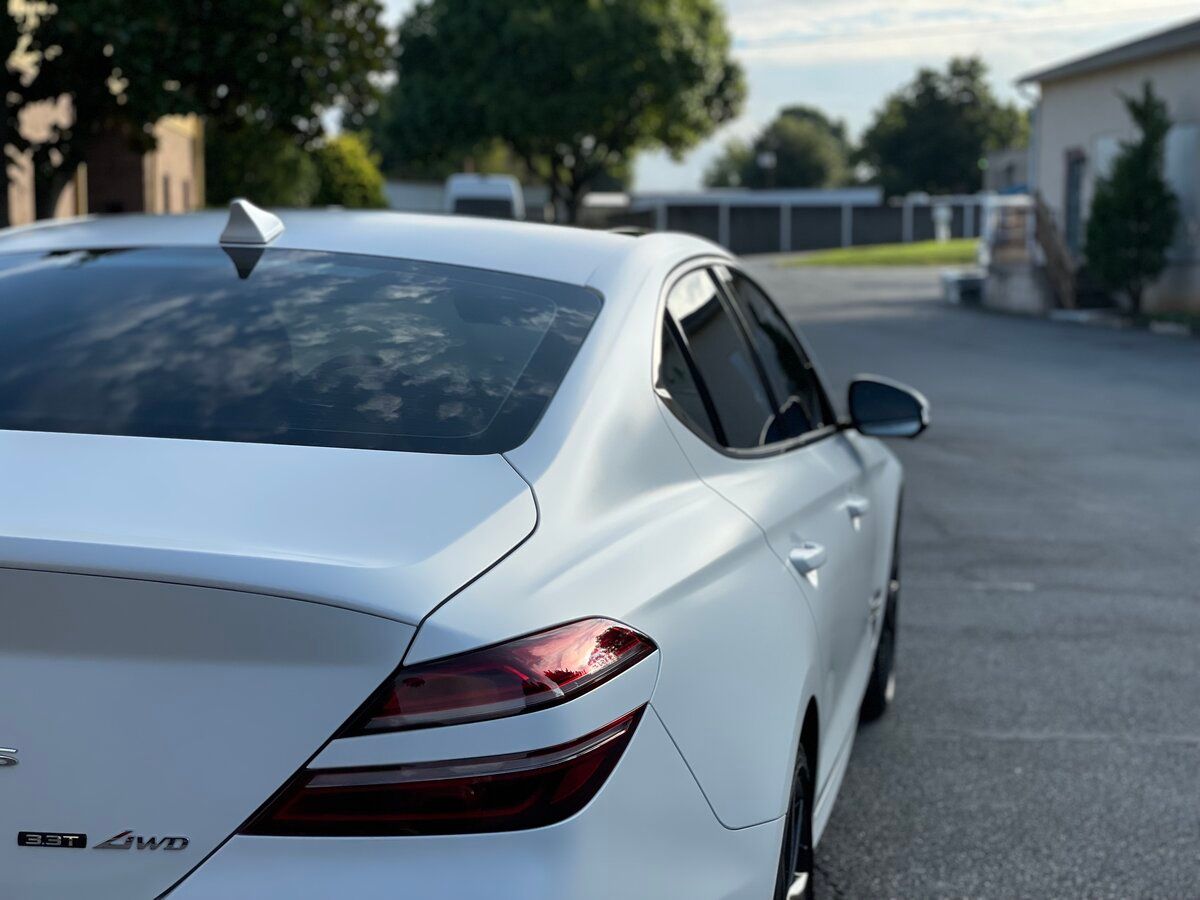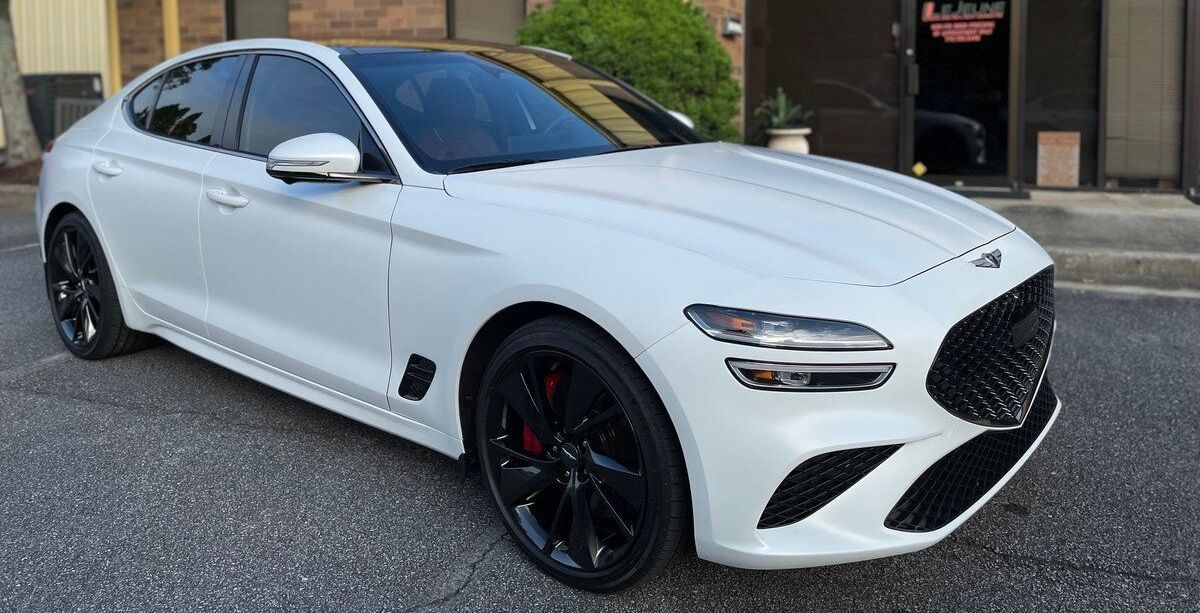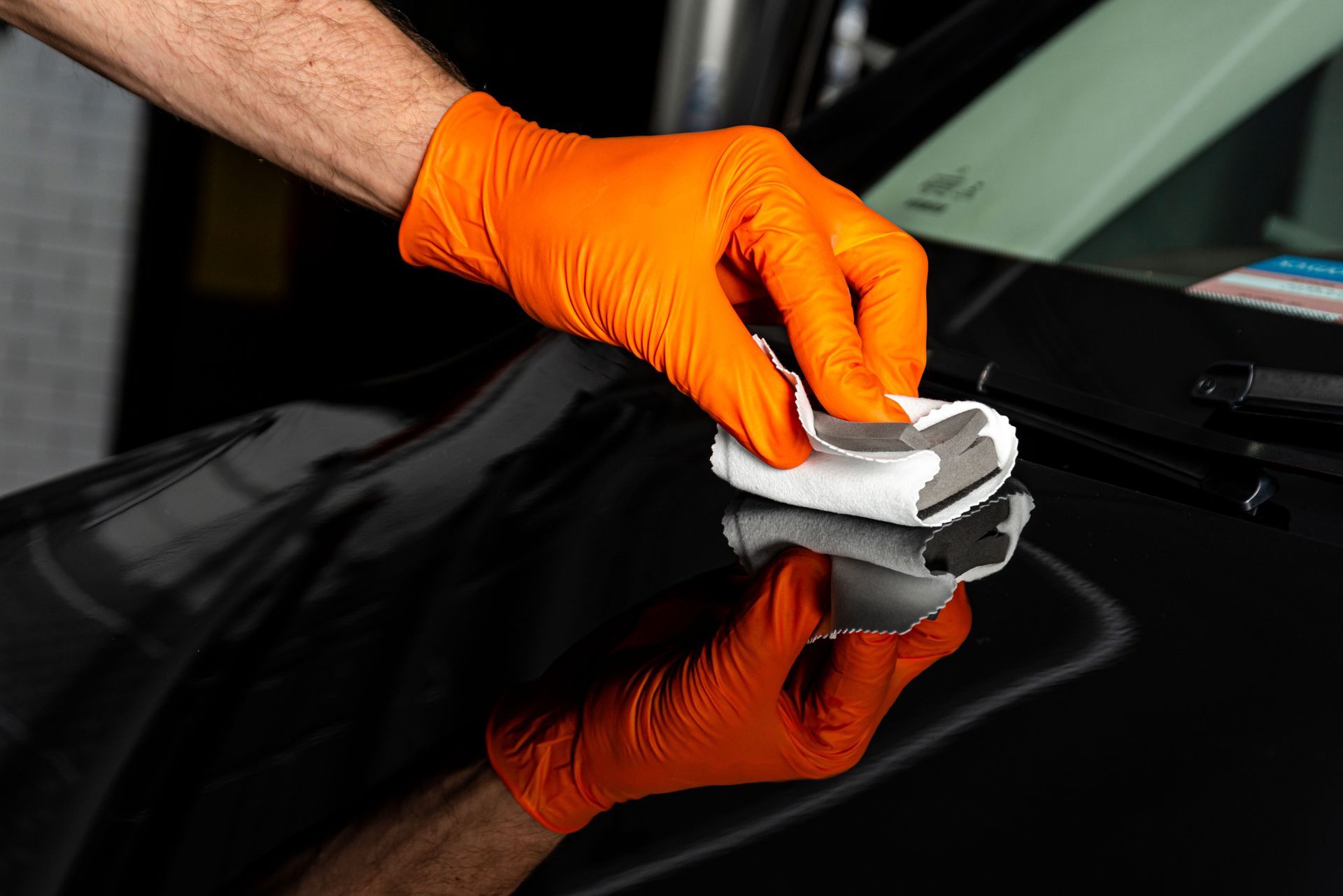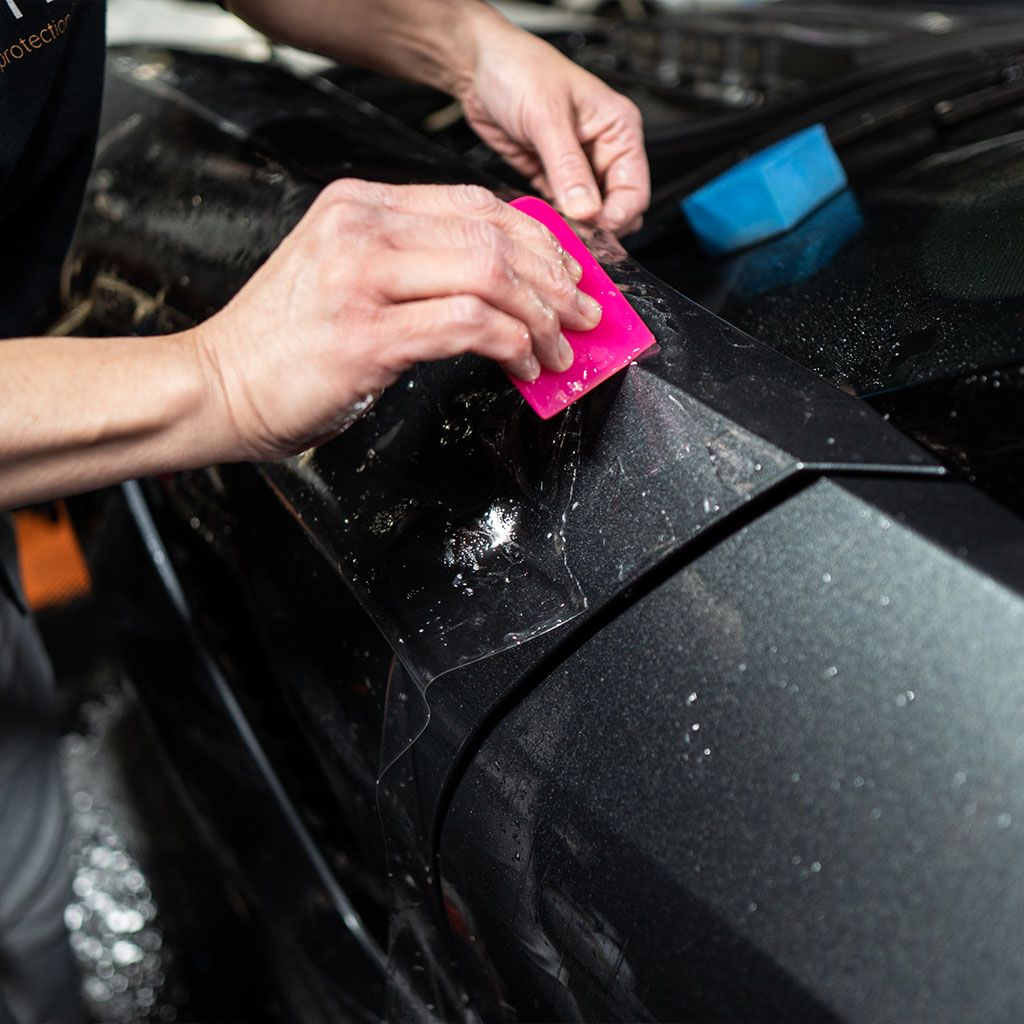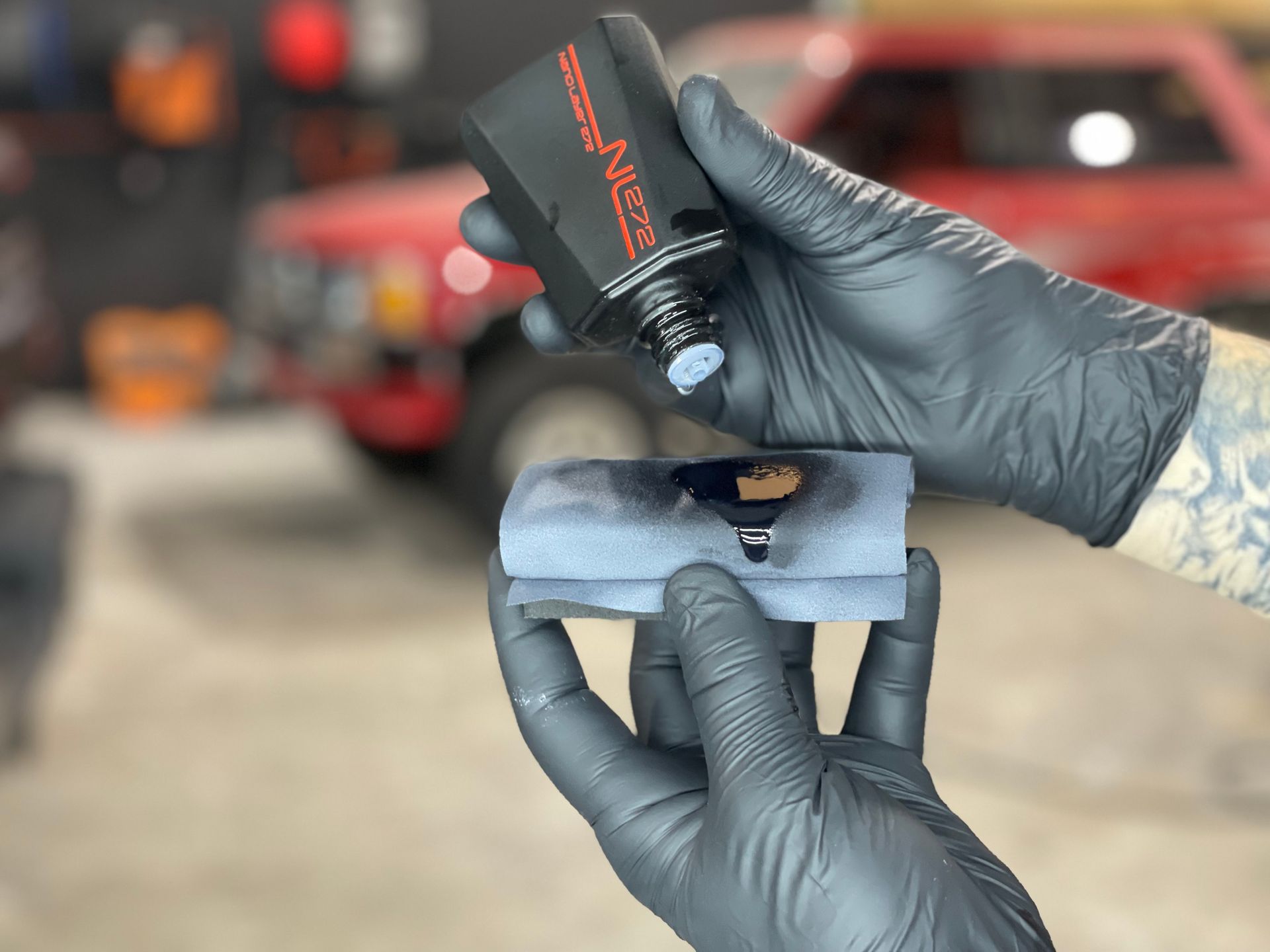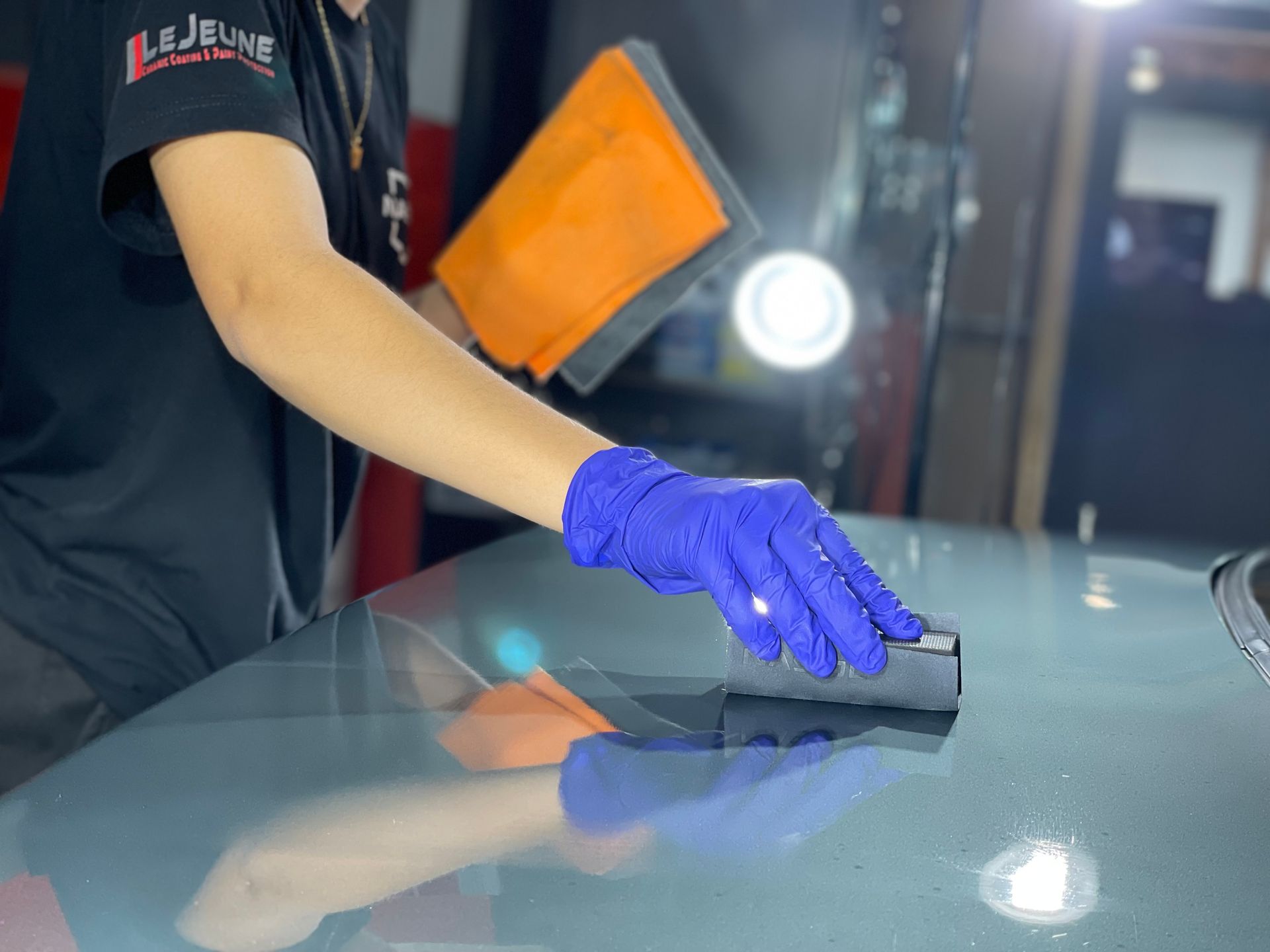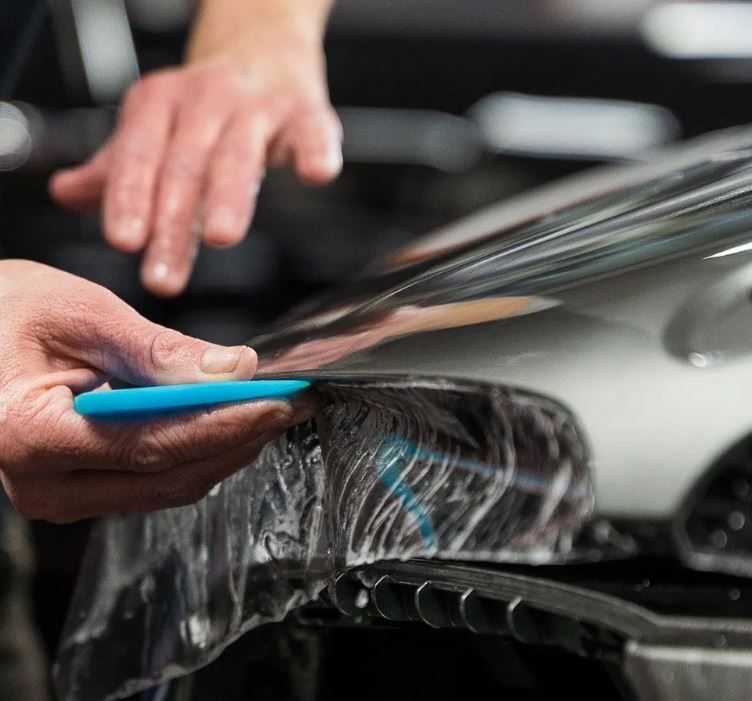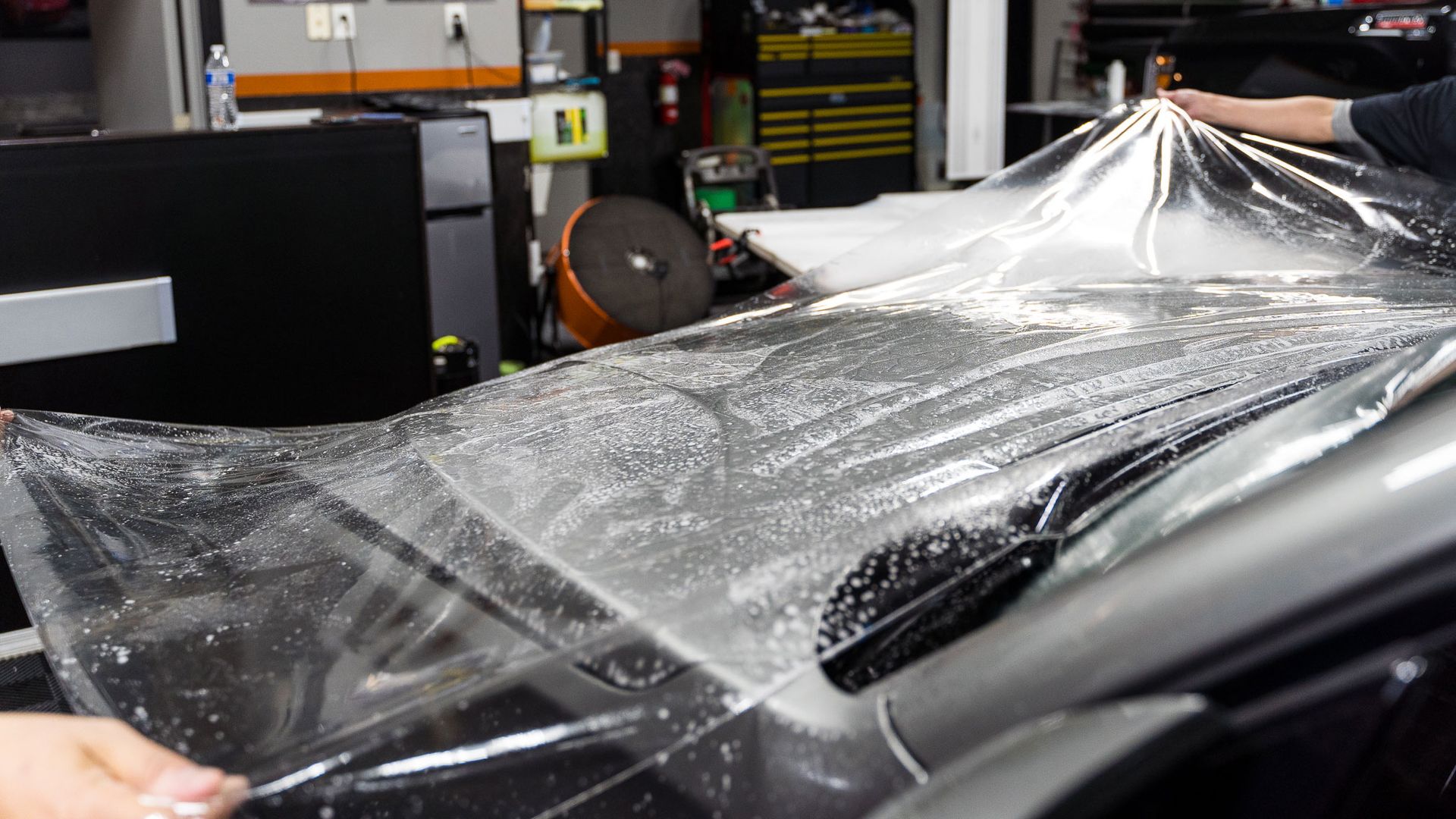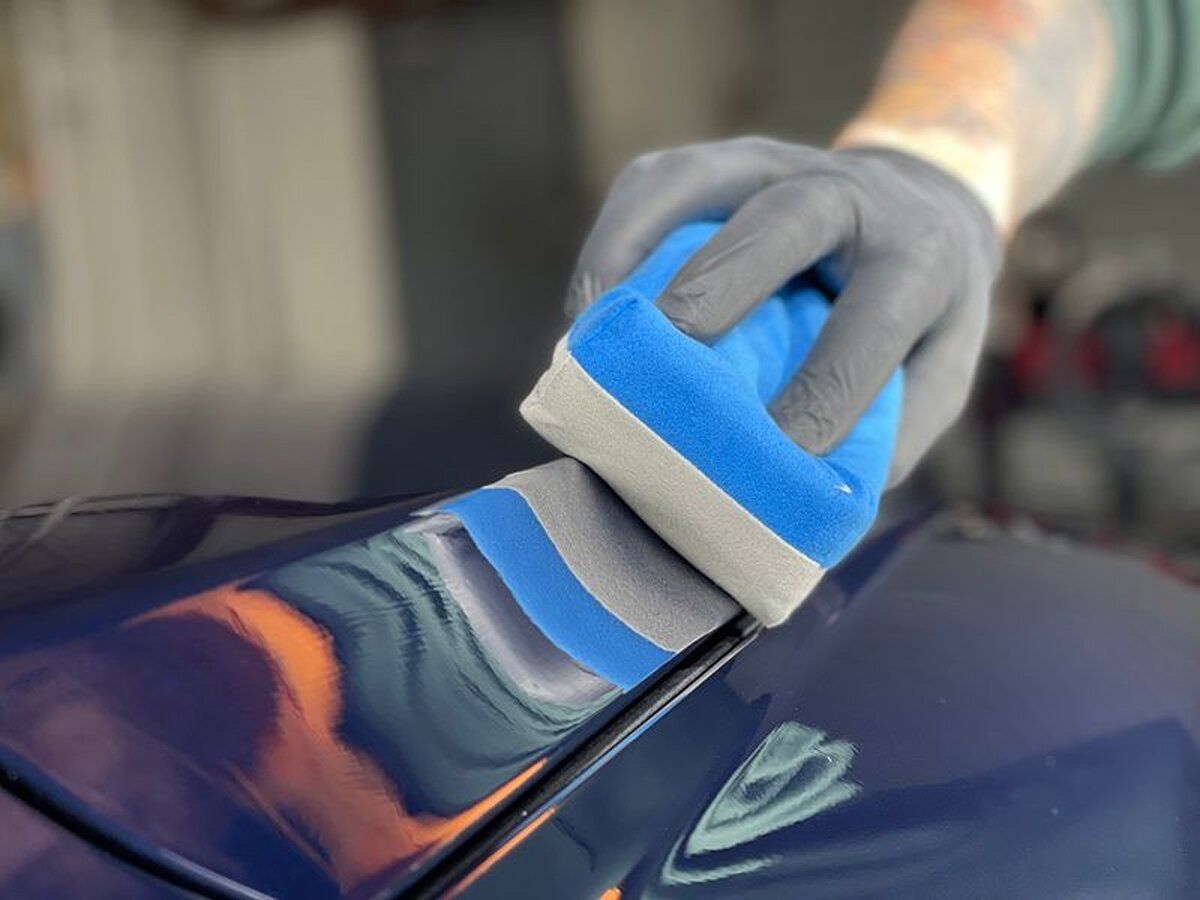How PPF Reduces the Need for Frequent Paint Repairs and Enhances Vehicle Durability
GET A QUOTECALL (770) 722-3486
Imagine taking your car out for a weekend road trip without worrying about chips, scratches, or fading paint. It seems almost impossible when you consider how often you’ve dealt with these issues in the past. Yet, there’s a solution many car enthusiasts like you have started turning to—paint protection film. This nearly invisible shield can save you both time and money by keeping your vehicle's exterior looking pristine in the face of everyday hazards. PPF acts as a sacrificial layer, absorbing dents from gravel or chemical stains that would normally damage your car's paintwork.
A paint protection film (PPF) acts as a protective barrier against stone chips, scratches, and environmental factors that can damage vehicle paint. By absorbing impacts from road debris and shielding surfaces from UV rays, rain, and oxidation, PPF helps maintain the integrity of the underlying paintwork, significantly reducing the likelihood of costly repairs over time.
What is Paint Protection Film (PPF)?
Paint protection film isn't just a fancy term for a clear coat; it’s a smart investment for anyone looking to preserve the appearance of their vehicle. Made primarily from polyurethane, this transparent film is meticulously designed to shield your car's paint from a myriad of potential threats, like stone chips, scratches, and harsh weather conditions. Imagine it as resilient armor that envelops your vehicle, ensuring its aesthetic appeal remains intact over time.
Layers of a Paint Protection Film
The power of a paint protection film lies not only in its material but also in its layered design. Each layer plays a crucial role in contributing to the film's overall durability and effectiveness.
- Top Coat Layer: This outer layer serves as the first line of defense against UV rays, which can lead to fading and oxidation of your vehicle's paint over time. Beyond mere protection, many top coats feature self-healing properties, meaning that minor scratches can often disappear when exposed to heat, effectively restoring the film's appearance without any effort on your part.
- Polyurethane Layer: The core of PPF consists of a flexible polyurethane composition. This layer is exceptionally durable and allows the film to absorb impacts from road debris. Think of it as a shock absorber that prevents damage from small stones or gravel kicked up by other vehicles—a common occurrence on highways.
- Adhesive Layer: Finally, we have the adhesive layer, which ensures that the film adheres smoothly and securely to your vehicle’s surface, minimizing the risk of peeling or bubbling. A good adhesive bond is essential for maintaining the protective qualities of paint protection film over time.
When applied correctly, this multilayered structure essentially acts as a barrier, preserving not just your car’s exterior but also its value. So, whether you're driving along city streets or navigating rugged terrain, each layer of paint protection film works cohesively to protect your investment from deteriorating under everyday wear and tear. It's more than just cosmetic enhancement—it's a proactive approach to vehicle care that helps ensure you won't need frequent paint repairs down the road.
How PPF Reduces Paint Repairs
PPF acts as a barrier between your vehicle’s paint and external elements, absorbing impacts from loose stones and debris. Instead of the paint being scratched, the film takes the hit. This advanced defense reduces the likelihood of scrapes and scratches on the car’s exterior.
- Protection Against Road Debris: Road debris, especially small rocks, can damage your vehicle’s paintwork during daily drives. With PPF in place, these projectiles hit the film rather than the paint, preventing chips and preserving the original finish. This minimizes the need for frequent paint repairs.
- Shields Against Chemical Stains: A paint protection film creates a protective layer that prevents chemical substances like bird droppings and bug splatters from etching into the paint. These materials can cause permanent damage if left unchecked, but the film ensures easy clean-up without affecting the underlying paint. This barrier helps maintain the paint's longevity.
- Guards Against Harsh Weather Conditions: PPF offers protection from harsh weather elements such as rain and UV radiation, which can lead to fading and discoloration over time. The film helps keep your vehicle looking newer for longer by providing a robust defense. This reduces the need for touch-ups and preserves the aesthetic value of your car.
With its protective features, a paint protection film minimizes the frequency of necessary paint repairs. It maintains the vehicle’s appearance by shielding it from common threats like debris, chemicals, and weather damage. This not only extends the life of the paint but also ensures your car retains its high-value look.
Enhancing Vehicle Durability with PPF
A paint protection film not only guards against unsightly blemishes and scratches but fundamentally enhances the durability of your vehicle's exterior. When we talk about durability in this context, we're referring to how well the vehicle's finish holds up against the relentless assault of environmental factors—like UV rays, bird droppings, and road debris—that can wear it down over time. Not only does PPF create a barrier against these elements, but it also helps keep that shiny exterior intact.
Vehicles equipped with a high-quality paint protection film can sustain their showroom-worthy finish for an impressive duration of up to 10 years longer than those without this protective layer. Imagine having a car that not only looks brand new for years but also adds to its resale value when it’s finally time to part ways. This extended lifespan isn’t the product of luck; it results from the fortified defense that PPF offers.
By adding PPF, you are investing in the longevity of your vehicle. The film effectively absorbs impacts from small stones and other debris without shattering or causing damage underneath. It acts like a shield, absorbing minor scratches and preventing them from reaching the original coat. That means fewer trips to the repair shop and less money spent on touch-ups or paint resprays.
But there’s even more to it. Beyond just preventative measures, many modern PPFs feature self-healing properties. This means that when exposed to heat—like the warmth of sunlight—small scratches can vanish on their own! This advanced technology transforms what was once a frustrating inconvenience into a mere fleeting moment. Consequently, you don’t just protect your vehicle; you ensure it maintains a pristine appearance effortlessly.
With these remarkable features in play, it’s clear that PPF is not just about protection but also about enhancing the overall experience of owning a vehicle.
Maintenance and Longevity Benefits
Regular maintenance of paint protection film not only preserves its appearance but also significantly boosts its effectiveness. When cared for properly, a well-maintained paint protection film can endure anywhere from 5 to 10 years. This lifespan relies on factors such as environmental exposure and the quality of care given. Here are the necessary care steps to ensure the longevity of your paint protection film:
- Routine Washing: It’s essential to wash your vehicle frequently using pH-neutral soaps along with soft wash mitts. These gentle cleaning agents won’t strip away the protective qualities of the film, nor will they scratch its surface. Rinsing off dirt and grime removes potential abrasive particles that could mar the film over time.
- Avoid Harsh Chemicals: It's tempting to reach for that heavy-duty cleaner when facing stubborn stains or buildup. However, using abrasive or acidic cleaners can harm the film, leading to premature peeling or yellowing. Just remember, less is more with paint protection film; stick to gentle products designed for automotive surfaces.
- Prompt Repair: Life happens, and even tough films are prone to occasional damage. When small tears or scratches appear, address them immediately; ignoring these issues can lead to larger problems like peeling or lifting, which compromise both the film's aesthetic and its protective capabilities. Quick touch-ups not only enhance longevity but also maintain the seamless look of your vehicle.
By embracing these straightforward care steps, you're essentially putting your PPF on a maintenance plan that pays dividends in protection and durability. The result is fewer paint repairs needed over time, giving you peace of mind about your vehicle's finish being safe from everyday wear and tear.
PPF Application Process Explained
The installation process for paint protection film is sophisticated and requires a careful hand. It's typically best left to professionals who possess the right tools and expertise, as they can neatly sidestep common mistakes like air bubbles or poor adhesion. However, having a grasp of the entire process ensures you know what to expect and helps you appreciate the craftsmanship involved.
- Surface Preparation: This initial stage involves thoroughly cleaning the vehicle to remove any dirt, dust, and contaminants that could interfere with adhesion. It's akin to washing your hands before a surgical procedure; cleanliness is vital. Professionals may use detailing products that can penetrate into crevices and lift away stubborn grime. Once the vehicle is spotless, it’s important to dry it completely, leaving no water spots that could disrupt the film's bond.
- Precision Cutting: Using advanced software alongside plotting tools, professionals accurately cut the paint protection film to match your vehicle’s specific dimensions. This step is crucial because any inaccuracies can lead to issues down the line, such as exposed paint or uneven edges. Imagine trying to tailor a suit without measuring—it's likely going to fit poorly. This attention to detail ensures full coverage and longevity.
- Application: Here, a water-based solution acts as a lubricant during placement, allowing installers to carefully position the film before making it permanent. This method provides flexibility; if the film doesn’t land perfectly on the first try, it can be repositioned without damage. It’s much like placing a sticker on a window—you want it to stick exactly right!
- Squeegeeing: This involves using a specialized tool to gently push out any trapped air bubbles beneath the paint protection film while ensuring it adheres smoothly against the vehicle surface. Imagine carefully pushing down on a balloon—it requires finesse to avoid popping it while getting rid of excess air at the same time.
The analogy here is useful: think of this entire application process like applying a screen protector to your smartphone. While we often take our time with that little task, understanding its importance helps us recognize why doing so on a larger scale—like with PPF—demands even more precision and care. Professional installation is highly recommended!
Trusted Paint Protection Film Service in Marietta, GA
LeJeune Ceramic Coating & Paint Protection offers
trusted paint protection film (PPF) services in Marietta, GA, designed to keep your vehicle safe from road debris, scratches, and daily wear. Our high-quality PPF acts as an invisible shield, preserving your car’s original paint while enhancing its durability against chips and impacts. With professional installation and a commitment to quality, we ensure your vehicle remains protected and maintains its flawless appearance. Reach out to LeJeune Ceramic Coating & Paint Protection today to protect your investment with our top-tier paint protection film services. Call us at (770) 722-3486 to get started!
